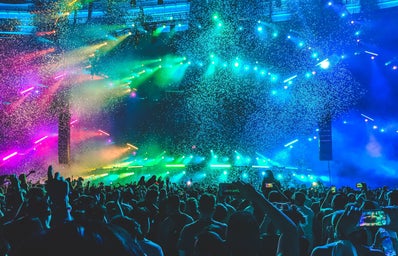“I think I learned some things about love too, it comes in many forms, and how could [the form] matter if your life is spent with a person you love?” (Anne with an E, Season 2)
There have been underlying queer themes in L.M Montgomery’s Anne of Green Gables since its creation, and season two of Anne With An E has created a space where these previously interpreted queer themes can grow in a more explicit form.
Season two is full of gender bending and drag, as well as lesbian and gay characters who all come together in a sphere of self expression at Aunt Josephine’s party (the first since the passing of her partner) in the second last episode of the season.
We are also introduced to a new character, Cole, a young man in Anne’s class who confides in Aunt Josephine and proclaims his gayness to her for the first time aloud. He is a character that is new to L.M Montgomery’s story, invented specifically for the TV show. A few longtime die hard Anne fans don’t necessarily support the inclusion of a new character to this classic story, but I for one love the addition.
Photo via IMDb
In season two, Anne learns a lot about love. She learns that it comes in many forms, and she is a device used to guide Dianne and others into the acceptance of this idea and reality. Dianne discovers that her Aunt Josephine and Aunt Gertrude were lesbians, and not just “life long best-friends” who live together as she was told her whole life. Dianne’s reaction is close-minded, as expected for the time, but Anne speaks with understanding and profound wisdom for her age as she explains love to Diane and outlines its many manifestations.
For older audiences who grew up with Anne and have viewed many of the remakes to this classic Canadian tale, the “modern” themes and additions have not always been viewed well. I wandered onto a site where parents can leave their reviews on shows for other parents to read when deciding if it is appropriate for kids. The interesting thing about the site is that parents can leave their reviews, and so can the kids. The general consensus of the parents is that Anne With An E adds dark themes to the classic tale, and there are many “disturbing” sexual elements. Some parents even had issues with the discussion of menstruation on the show, saying that parents should preview the show first before showing it to their 13 year olds.
Photo via Autostraddle
The parents who commented also seemed to have issues with the “suggestion of lesbianism”, as they label it. One review stated that “Hollywood is trying to indoctrinate children regarding sex and sexuality”, implying that representation of sexuality in media causes children to experience sexual fluidity. The visibility of sexuality and sexual fluidity in media is important as it allows queer audiences and audience members who are questioning their own sexual fluidity to connect with the characters and the stories on screen. The portrayal of sexuality in Anne With An E does not convert young audiences, but rather allows for those who are more fluid sexually to realize and explore it within themselves. Representation is important and when people see themselves represented in Anne With An E, it allows for a greater sense and affirmation of identity to be cultivated. Photo via IMDb
It’s important to recognize not only the feminist and LGBTQ+ themes within the story, but also within the development of the project as well, both in pre-production and in production. In an interview with Amybeth McNulty, she discusses how for season two the writers room was completely female identifying, and the whole season was written by women. She also talked about the directors being mainly female and how for the first half of season two, the entire camera crew was female as well. Amybeth states that it “was so normal to [her]”, and unfortunately it’s not normal enough in other films and television shows. Something that I also admire is Amybeth herself and how she talks about the character Anne Shirley in a dynamic way. Amybeth herself identifies as queer, and she can be seen using the hashtag #AnneShirleyisGay throughout social media.
The evolution of Anne Shirley over time is really quite beautiful. To see Anne develop from a character with repressed sexual desires that are just hinted at and interpreted by viewers to a character who challenges gender norms and gender essentialism demonstrates that, as society progresses forward, so should our characters and the ways in which we tell their stories. Since the beginning, Anne of Green Gables has interwoven hints of Anne Shirley’s sexuality and queerness. An article in The Globe and Mail even states that “the idea of Anne as lesbian, or at least of the Anne books as rife with lesbian imagery, is not new to academia”. Photo via IMDb
For the first time in Anne With An E, we see Anne express herself in a more gender nonconforming way triggered by her new buzzed haircut that was the only solution to Anne’s hair dye mishap. Although this hairstyle is well worn today by people of all gender expressions, in 1908, the era in which Anne’s world exists, it was not a style suited for young females. Embracing her new look and disputing gender essentialism, Anne decides to dress in “boy’s” clothing and walk around town as a young boy for the day. She gets asked to help lift peoples suitcases and she’s seen as strong for once and not delicate. We also see Anne embrace playing a male character in the school play despite the mocking remarks of the other school girls. Gender essentialism is an idea dating back many centuries that is based on the concept that men and women are inherently and unchangeably different than one another. It’s a concept that attempts to categorize men and women into two separate boxes of behavioural characteristics, and is often used “to excuse gender-based biases in society”.
Photo via IMDb
Moira Walley-Beckett’s portrayal of Anne of Green Gables continues to add constructive and complex layers to the story with every new season. The image of Anne Shirley as a “gay icon”, as fans on social media call her, is one that we can see in L.M Montgomery’s novel when reading with a critical and “modern” lens. It’s important to continue to delve deeper into our revived characters with each remake, and develop them in a more progressive way as we, society, continue to grow. Anne Shirley is an example of a character who not only withstands time, but evolves with it, and I can’t wait to see where season 3 will take her.



